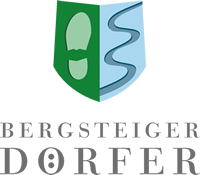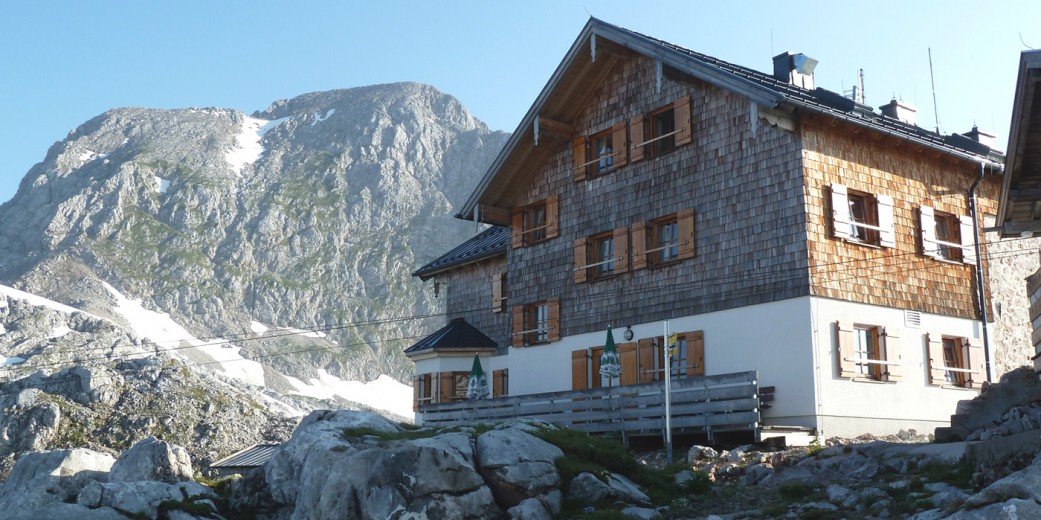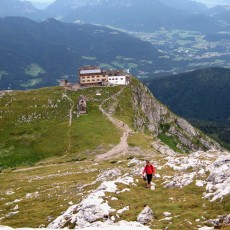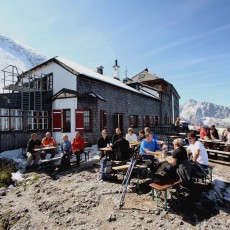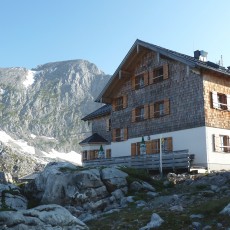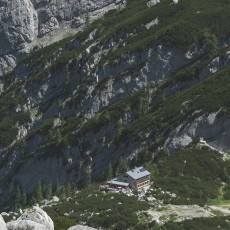The fact that Ramsau is the ideal departure point for a summit climb didn’t remain a secret for long among the international mountain climbing community. The Watzmann was scaled in 1800 by Valentin Stanic of Slovenia. In 1830, the Bishop Prince Friedrich von Schwarzenberg of Salzburg managed the first ascent of the Hochkalter summit (2607 m) with the Ramsauer Gamsjagern Tatz and Wein, which are regarded as forerunners of Ramsau’s renown mountain guide history. 1875 saw the foundation of the Berchtesgaden section of the Deutscher Alpenverein (German Alpine Club) with one of its first members being the mountain guide, Johann Grill of Kederbachlehnen, renown for his first ascent of the Watzmann-‐Ostwand (east wall) on June 6, 1881 along with climber Otto Schück. Grill, known as “the Kederbacher”, became Germany’s first authorised mountain guide and in his day, was renown as one of the world’s finest.
The large influx of international mountain fans to the region is accredited to the development and upgrades of various alpine huts: the Watzmannhaus (1928 m. altitude) constructed within 14 months in 1888 as well as the erection of a wooden shelter on the Hocheck in 1898. Unfortunately the first alpine casualties were registered not long after as two students from Munich perished on the Watzmann in 1900 and the recovery of the climbers was assisted by the Ramsauer Burschen. The foundation of a mountain rescue service didn’t take place till 1945 with Raphael Hang as its first superintendent.
In 1874 the Verschönerungsverein (improvement association) Ramsau was founded by the teacher Martin Westermayr as the 11th section of the Verschönerungsvereins Berchtesgaden and in 1907 was established as an independent association in Ramsau. Westermayr took pains to accomodate the growing requirements of the many Ramsau visitors and guests.
The accessible steep trail through the Wimbach ravine was renovated and expanded in 1847 with further trails and steep tracks following in the years to come. In 1922 an alpine hut (1750 m. altitude) was erected by the Hochland alpine section below the Blaueis glacier as well as the Wimbachergries hut (1327 m. altitude) as an alpine staging post of the Munich tourist association “Die Naturfreunde“ in 1924. Parties interested in the preservation of nature successfully resisted the planned building of a chair lift on the Watzmann which even to this day, has not taken place. An important aspect regarding the development of the Ramsau municipality is the building of transverse alpine road, known today as the Deutsche Alpenstraße, which begain in 1934. Not long after, in 1938, the Traunsteiner hut (1560 m altitude), located in the Reiteralm mountains, was constructed as a staging post for climbers.
Herman Buhl
Governance was transferred to the occupying American power in 1945 and as of 1950, a growth in tourism and climbing activity began to increase. Hermann Buhl, a renown climber from Innsbruck, built a home and settled in Ramsau after marrying a local girl – “sein Generl“ as he liked to call her. Buhl’s claim to fame was the first ascent of Nanga Parbat (8125 m) on July 3, 1953 as well as Broad Peak (8051 m) after which he was enthusiastically celebrated upon his return home. On June 27, 1957, Buhl tragically plummeted to his death during his climb of Chogolisa as he was hit by a cornice, his body never to be found. A memorial marmor plate in honour of the exceptional climber can be found on the wall of the cemetry in Ramsau as well as a memorial located in front of the tourist information office of the town.
Founding of the Berchtesgaden National Park
In 1976 Ramsau received the title of “Heilklimatischer Kurort“ (spa town with climatic healing benefits) and in 1978 the Bavarian State set an important milestone for environmental and nature conservation in Bavaria with the founding of the Berchtesgaden National Park.
Along with agriculture, the main line of business of the Ramsau community is tourism which has grown exponentially after the fall of the Berlin wall and opening of the European borders. But nonetheless, the Ramsau community makes a large effort to promote sustainable tourism with the preservation of nature and the local farming culture in the foreground. Investments such as the building of up-to-date sewage drainage systems and brine concentrating structures, maintenance of water supply and the modernisation of private and commercial accomodation facilities, all add to the attractiveness of Ramsau and comfort of guests visiting the region. In addition, the development of attractive, new themed hiking trails such as the “Ramsauer Maler-Rundweg“ (artist loop-‐trail), “Mühlstein-Weg Alm-Erlebnisweg“ (Mill Stone Trail and Mountain Pasture Adventure Trail) and the installation of the cross-border “AlmErlebnisBus-Linie“ (bus line), all make for a memorable visit to the Ramsau region.
A number of experienced mountain guides are available to guests of the region looking to explore high-altitude mountains. Needless to say, Ramsau boasts one of the highest German wide concentrations of state certified mountain and ski guides.
